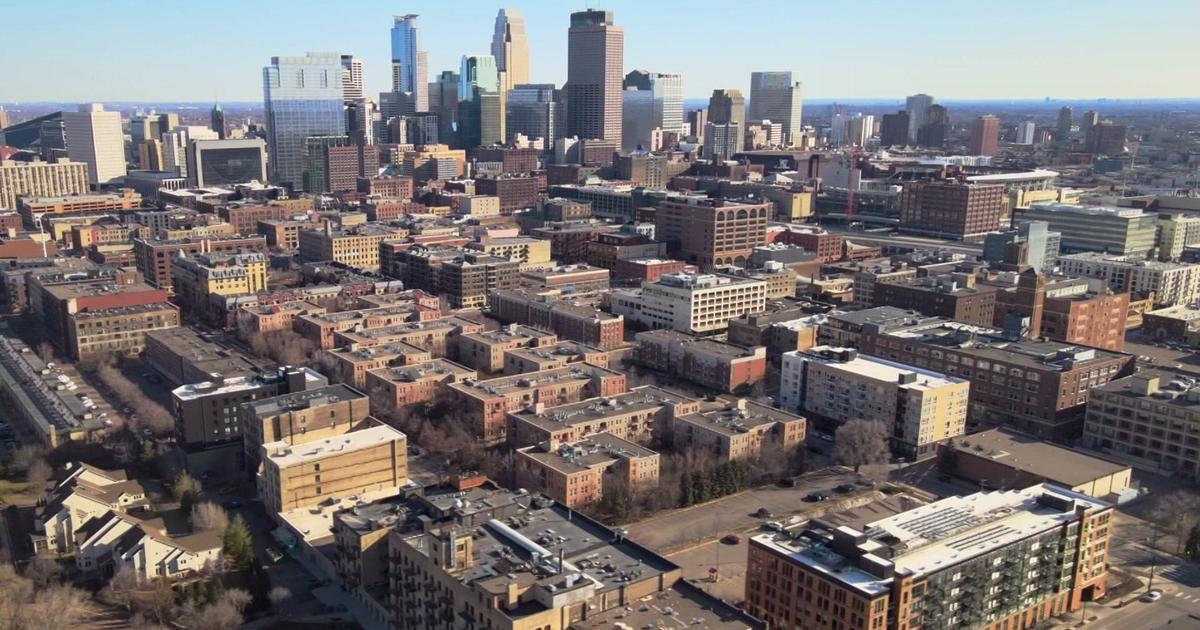'Stay Off Our Lawns': Suburbanites To Sidewalk Supporters
WINDSOR HEIGHTS, Iowa (AP) — When officials in the Des Moines suburb of Windsor Heights began talking about installing sidewalks to improve safety and encourage outdoor activities, they anticipated some grumbling from residents who liked the look of uninterrupted, lush lawns.
They didn't expect packed City Council meetings, protest signs stretching down leafy suburban streets and threats to defeat officials in the next election.
"People are afraid of change," City Council member Threase Harms said of sidewalk opponents. "They are very passionate, but I think they've gone a little too far with their passion."
At a time of rising obesity rates and push for cities to encourage more active lifestyles, intense opposition to sidewalks may seem surprising, but similar disputes are raging in neighborhoods across the country.
Residents have crowded into meetings to oppose sidewalks in communities from the Minneapolis suburb of Edina to parts of Washington, D.C., and from the Rochester, New York, suburb of Irondequoit to the Kansas City suburb of Prairie Village, Kansas, and the Milwaukee suburb of Delafield.
Like Windsor Heights, most of the disagreements are in neighborhoods built in the 1950s and 1960s that were designed to be different from the larger cities they border. The absence of sidewalks was intended to give the neighborhoods a rural appearance and more privacy at a time when walking for exercise was less common.
More than half a century later, lots of residents want to keep it that way.
Among them is Chris Angier, who grew up in Windsor Heights on a street without a sidewalk and notes, "Guess I'm still alive."
Angier has moved from the area but has been involved in efforts to fight the sidewalks that would cut across his mother's lawn. She's in her mid-80s and has lived in the house since 1964.
Like other residents, Angier blames the sidewalk push on newly elected City Council members who moved from Des Moines and other nearby cities.
"Many of us older residents wish they'd go back where they came from," said Angier.
Just down the street, John Giblin echoes that thought, noting dryly, "They tell us we have to get with the times."
The arguments are similar in the suburb-like Washington, D.C., neighborhood of Hawthorne, where for years residents have bickered over plans to install sidewalks along a busy thoroughfare, Chestnut Street.
The fight has been going on for so long that supporters recently bought new pro-sidewalk signs because the old ones had weathered in the past decade.
Even as he and other neighbors pressure city government to build sidewalks along Chestnut, resident Everett Lott acknowledged, "It's the strangest thing."
Lott said that with exceptions, the fight is generational, as younger people with children seek sidewalks and older residents resist.
"People feel like it's their land and they shouldn't have their land infringed upon," said Lott, whose now 9-year-old son was 2 when he became involved in the sidewalk effort. "They moved in 30 years ago and chose it for the look and feel, and they want to preserve that, but the city is changing."
In Edina, Minnesota, an affluent suburb of Minneapolis, neighbors have packed hearings to oppose the City Council's plan to add sidewalks over a 20 year period, saying there was no need to "citify" the community.
Despite the opposition, Mayor James Hovland said officials have moved ahead with their plans and find the opposition is eroding. Hovland acknowledged there are holdouts, especially residents of large, more rural lots, but he said those spots aren't a top priority for sidewalks, anyway.
"It's different from the 1960s, when everything was oriented around the automobile," he said. "We're seeing less of that now."
Still, some residents can't see why they need to change what drew them to the suburbs in the first place.
Anastasia Loukaitou-Sideris, an urban planning professor at the University of California, Los Angeles, notes privacy has always been a selling point for suburban residents, dating back a century or more.
"Suburbs were marketed as completely different from the evil urban settings," she said. "Private, rural, very green areas."
Transportation experts also acknowledge pushback when suburban cities make changes.
Emiko Atherton, director of the National Complete Streets Coalition, which advocates for street improvements that benefit bikers and walkers, said such sidewalks make sense, pointing to statistics showing improvements in safety, housing prices and health in areas the make changes.
In Windsor Heights, officials said they haven't made final decisions about sidewalks but would make changes in coming months to make the city's street system safer and better serve all users, not just motorists.
Angier noted that Windsor Heights officials can't point to any serious crashes that have hurt walkers, and he expects residents to take out their anger at future elections.
"Whoever runs against the mayor and council next time will be very well-funded," he said.
(© Copyright 2016 The Associated Press. All Rights Reserved. This material may not be published, broadcast, rewritten or redistributed.)



